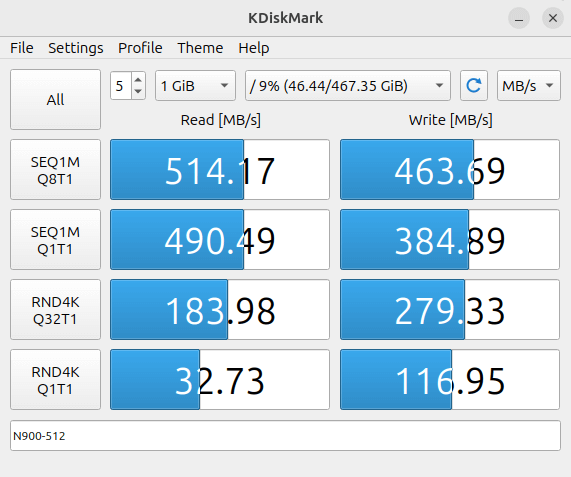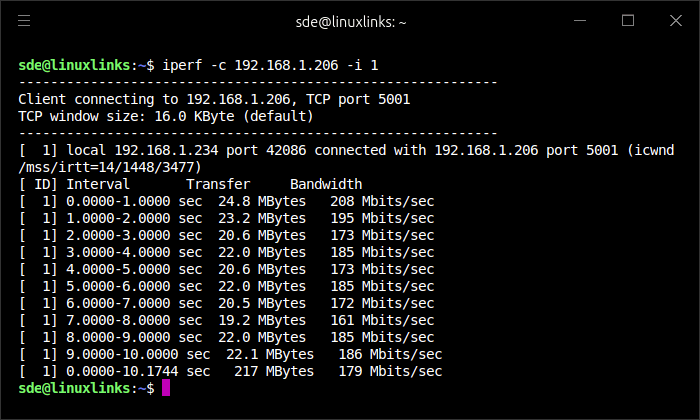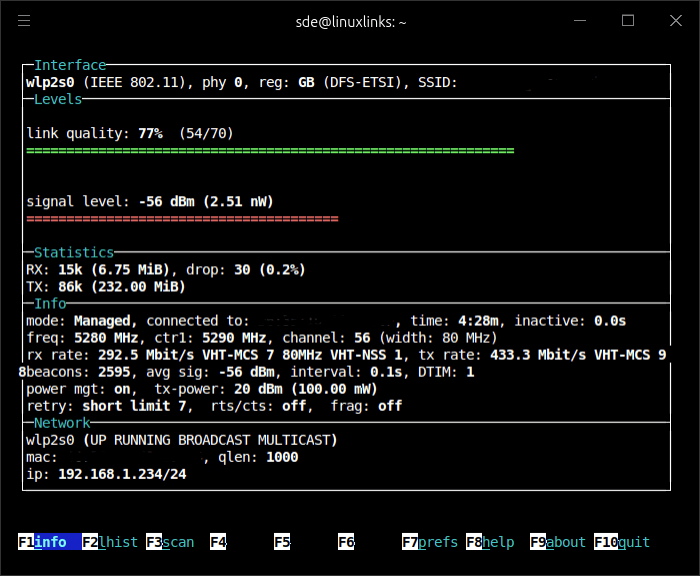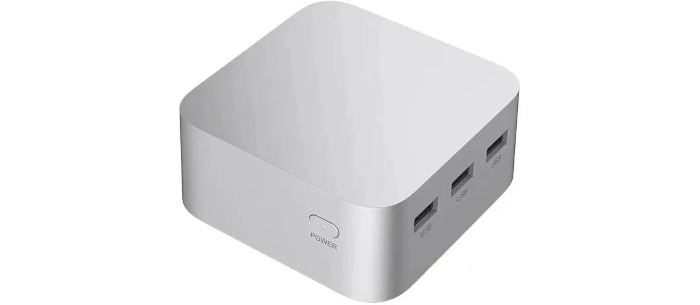Disk Benchmark
The FIREBAT has a 512GB Wicgtyp SSD. It has the M2. 2242 Form Factor with a SATA SATA III 6 GB/s interface.
We tested the drive with KDiskMark, a free and open source graphical frontend to Flexible I/O. The software provides an easy to view and interpret comprehensive benchmark result.
Here are the results for the 512GB M.2 2242.

The M.2 SSD’s performance is poor compared to the vast majority of mini PCs. It’s one of the areas where FIREBAT has made a big compromise to keep costs down. More importantly, we have no data on the reliability of the Wicgtyp ‘brand’. If you value your data, make sure you backup on a regular basis.
WiFi
We generally prefer network connections over ethernet rather than Wi-Fi. And the FIREBAT has dual 1G ethernet. That’s a big advantage.
But Wi-Fi does has some advantages over ethernet. There’s no wire clutter, and you can connect anywhere in your home. Almost all modern devices can connect to Wi-Fi from desktops to smartphones. And you can have many devices connected and streaming simultaneously.
To test typical day-to-day performance, we placed the FIREBAT on a different floor to our router. That’s intended to mirror a fairly representative setup for home Wi-Fi systems where it’s not convenient to locate a PC fairly close to the router.
Here are performance statistics using the iperf utility. The local machine (IP 192.168.1.206) is connected to the router via wired ethernet.

The FIREBAT’s WiFi performance is lamentable. in part because the FIREBAT only has WiFi5 2.4/5.0. We weren’t expecting stellar performance compared to the WiFi performance of the Intel NUC 13 Pro Mini PC with its superior Wi-Fi 6E AX211 (Gig+), but the FIREBAT’s WiFi is woeful.
For reference, the NUC gets around 680 Mbits/sec, and most laptops average around 400-500 Mbits/sec, all in the exact same location.
And yes, the FIREBAT was connecting at the 5 GHz band, as confirmed by wavemon’s output below.

Next page: Page 5 – Specifications
Pages in this article:
Page 1 – Introduction / System
Page 2 – Processor
Page 3 – Memory / Graphics
Page 4 – Disk / WiFi
Page 5 – Specifications
Complete list of articles in this series:
| FIREBAT T8 Plus Mini PC | |
|---|---|
| Part 1 | Introduction to the series with an interrogation of the system |
| Part 2 | Benchmarking the FIREBAT T8 Plus Mini PC |
| Part 3 | Testing the power consumption |
| Part 4 | Multimedia: Watching videos and listening to music |
| Part 5 | How does the FIREBAT fare as a gaming PC? |
| Part 6 | Windows Subsystem for Linux 2 |
| Part 7 | Installing and Configuring EndeavourOS, an Arch-based distro |
| Part 8 | Installing and Configuring Rhino Linux, a rolling release Ubuntu-based distro |
| Part 9 | VirtualBox performance on the FIREBAT |

Backup regularly is good advice with that unknown SSD.
I see you reference a 10th gen Intel machine. Can you provide benchmarks for the kernel build and FLAC encoding times for the i5-10400 so I can compare that to the N100 machine.
Hi James
When I get an opportunity, I will run the benchmarks on the 10th gen machine and update here.
Here are the results for the i5-10400 machine.
Linux Kernel 6.8 compilation took 198 seconds
FLAC audio encoding took 18.2 seconds
Thanks Steve.
The N100 looks very underpowered. I think I’ll stick with my system.